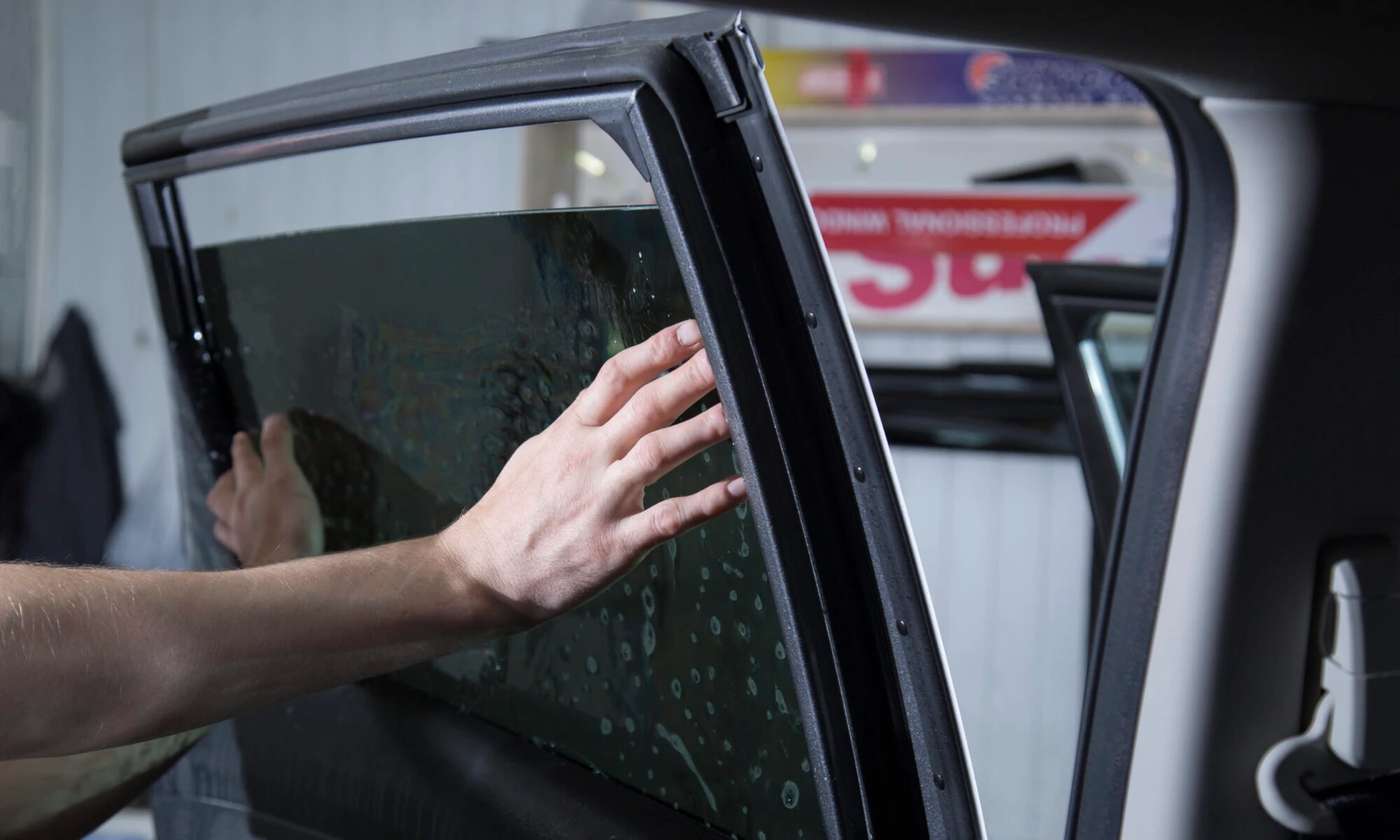Exactly How Window Tinting Improves Your Driving Experience in Hot Climates
Exactly How Window Tinting Improves Your Driving Experience in Hot Climates
Blog Article
The Refine of Expert Window Tinting Explained
From picking the right movie kind to the precise prep work of home windows, each step plays a critical duty in achieving a remarkable application. Following these first preparations, the careful cutting and application of the movie demand accuracy to stay clear of blemishes.
Picking the Right Window Film
The first factor to consider is the type of movie, which can vary from dyed, metalized, to ceramic films (window tinting). Dyed films largely supply privacy and aesthetic enhancement, while metalized movies mirror warm and UV rays, boosting power effectiveness.
Following, take into consideration the film's Visible Light Transmission (VLT) percent, which figures out just how much light enters the room. A lower VLT offers better personal privacy and warmth rejection but might decrease all-natural light considerably. Additionally, the movie's solar warm gain coefficient (SHGC) is essential; a lower SHGC shows much better thermal performance, helping to keep indoor comfort.

Preparing the Windows
As soon as the ideal home window film has actually been chosen, the next step is extensively preparing the home windows for setup. This preparation is important for achieving optimal attachment and making certain a perfect appearance post-installation.
The first job involves cleansing the windows diligently (window tinting). A top quality glass cleaner is essential, ideally one that is ammonia-free to avoid harmful any window seals or color materials. Making use of a lint-free cloth or paper towels, technicians must get rid of any type of dust, dust, or grease, paying unique attention to the edges and edges where debris commonly accumulates

Cutting the Movie
An exact approach to reducing the film is necessary for guaranteeing a perfect fit on the ready windows. This step calls for both skill and focus to detail, as errors can lead to unattractive gaps or overlaps that concession the visual and practical top qualities of the tint.
Prior to reducing, the professional must measure the window measurements accurately, representing any kind of distinct forms or shapes. It is recommended to make use of top quality home window movie, as this material has a tendency to be extra forgiving during the reducing procedure. The movie is generally laid level on a tidy, smooth surface, and a sharp utility blade is used to ensure clean sides.
To achieve optimum results, numerous experts make use of templates created from previous setups or utilize software program to design accurate patterns. A typical strategy entails including an extra margin to the template, allowing for modifications throughout the application stage.
Moreover, cutting the film in a controlled setting minimizes the danger of pollutants impacting the sticky side. By sticking to these careful techniques, home window tinting specialists can make certain that the movie not just fits effortlessly yet likewise does successfully gradually, improving both look and performance.
Applying the Tint
After carefully cutting the film to the proper dimensions, the following go action includes applying the tint to the window surface. This process begins with guaranteeing that the link window is tidy and without any kind of dirt, particles, or deposits that might affect adhesion. A specialized cleansing option is usually made use of, complied with by extensive drying with a lint-free cloth.
As soon as the surface is prepared, the installer will thoroughly position the color movie against the glass. It is necessary to line up the film precisely to prevent misplacement, as any type of errors can result in an amateur look. To facilitate this, the installer may make use of a light haze of application solution on the sticky side of the film, enabling for slight rearranging if essential.
Making use of a squeegee, the installer will after that start to press the movie onto the glass, functioning from the facility outwards to get rid of air bubbles and guarantee a company bond. This technique is crucial, as it ensures a smooth and flawless surface. Throughout the application, attention to information is important to avoid folds or imperfections, making sure that the color not only boosts appearances but likewise provides the preferred capability.
Final Assessment and Treatment
The final evaluation is a vital action in the window tinting process, making sure that the installment meets both visual and useful standards. During this stage, professionals thoroughly examine the installed tint for any type of blemishes, such as bubbles, folds, or misalignments. An extensive analysis additionally includes checking the adherence of the film to the glass, as well as its uniformity and general look.
After the examination, correct care and maintenance instructions are offered to the client. It is necessary to educate them concerning the advised timeline for cleaning the colored home windows, typically advising a wait of a minimum of 1 month after installment to permit the glue to treat totally. Customers must be informed on appropriate cleaning products and techniques, emphasizing the evasion of ammonia-based cleansers that can harm the color.
In addition, specialists need to suggest consumers on the relevance of normal upkeep to extend the life of the tint. This includes look at this site periodic checks for signs of wear or damages and reacting immediately to any type of issues. By ensuring a comprehensive last inspection and providing clear treatment standards, home window tinting experts improve client complete satisfaction and the durability of their work.
Conclusion
The expert window tinting process encompasses numerous essential actions that make sure top notch results. Picking the ideal film type, preparing the home windows thoroughly, accurately reducing the film, and using it with precision are vital for achieving a remarkable surface. An extensive last inspection warranties that all standards are fulfilled, while appropriate post-installation treatment is important for keeping the tint's long life and performance. Following these treatments eventually boosts both the aesthetic allure and performance of the colored windows.
Report this page